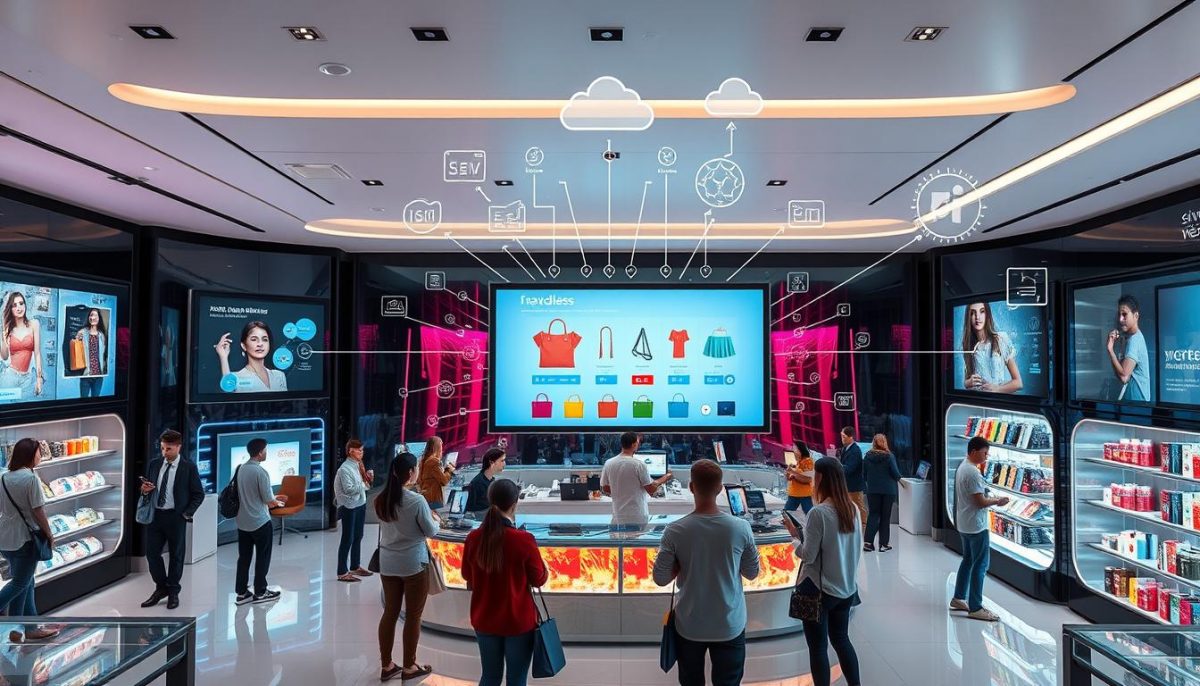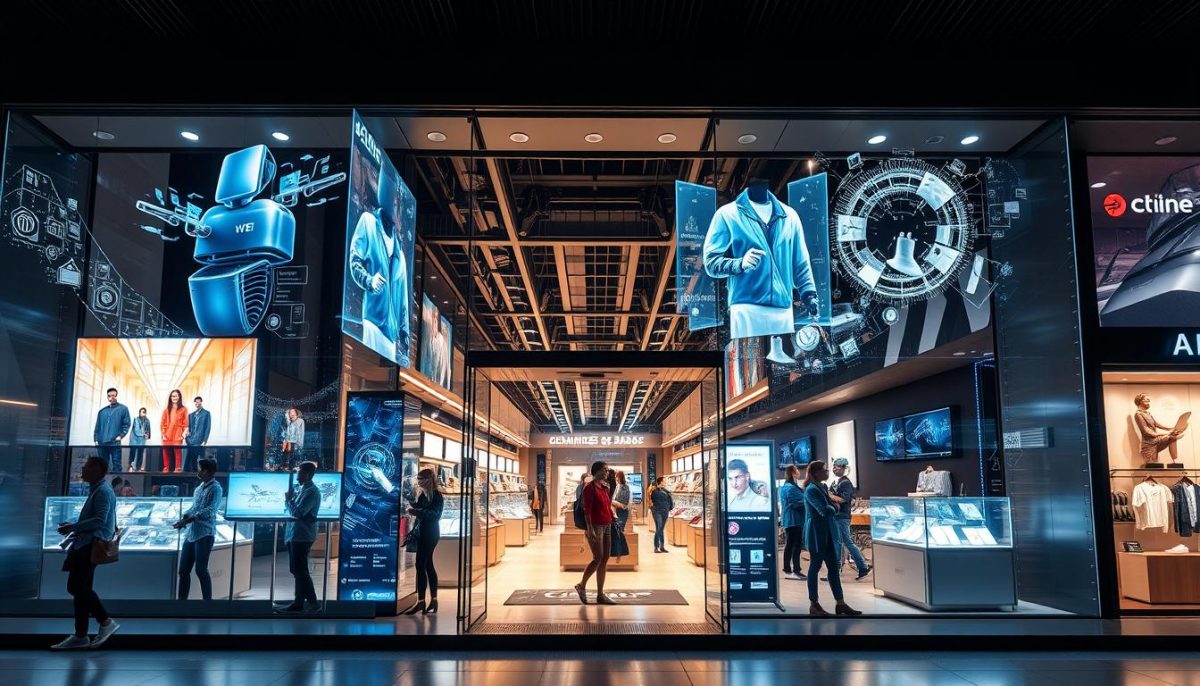Today, keeping pace with digital changes is key for businesses. Headless commerce marks a big shift, separating site looks from its core operations. It lets companies tailor online experiences like never before.
Brands like Nike and Adidas lead the way, showing how it’s done. Studies show a whopping 80% of companies using this approach feel more nimble and adaptive. To stay ahead, adopting headless commerce can supercharge how you connect with customers.
Understanding the Basics of Headless Commerce
The e-commerce scene is changing fast, pushing companies to update their game plans. At the core of this shift is headless commerce. This concept gives businesses the chance to be more flexible online. Understanding headless commerce helps us see its many benefits over old e-commerce ways.
Defining Headless Commerce
Headless commerce is a fresh way of looking at e-commerce structure. Here, the front and backend work apart. This split lets companies make unique, tailored shopping experiences beyond old system limits. Brands can use many techs to better meet what customers want on different channels.
How Headless Commerce Differs from Traditional Models
Comparing headless to traditional commerce shows big changes. Older e-commerce ways mix front and back end, blocking customization and tech use. Meanwhile, headless commerce makes mixing in new tech like AI and Augmented Reality easy. This way, shops can better match what each customer likes. Look at the table below for main differences:
| Feature | Headless Commerce | Traditional Ecommerce Models |
|---|---|---|
| Flexibility | High – Independently customizable front and back end | Low – Limited by set templates |
| Scalability | Excellent – Easily adds new tech | Moderate – Hard to change |
| Personalization | Advanced – Changes based on customer info | Basic – Same for every customer |
| Integration Capabilities | Seamless – Works well with new tools and platforms | Restricted – Few outside connections |
By looking at headless versus traditional ecommerce, companies can pick the model that fits their growth goals and how they connect with customers best.

The Future of Headless Commerce and Why Your Business Needs It
eCommerce is changing fast, with new customer demands on the rise. These include personalized, quick, and seamless buying experiences. By adopting headless commerce, companies can better adapt to these changes.
Adapting to Customer Expectations
Today, how customers feel about their shopping experience can define a brand’s success. It’s all about creating personal connections. Headless commerce allows for customization of the digital journey, boosting satisfaction and loyalty.
Scalability and Flexibility Advantages
The ability to quickly grow is crucial in today’s business world. This is true when dealing with sudden increases in demand or unexpected events like the COVID-19 pandemic. Headless commerce enables businesses to adapt their operations easily, offering much-needed flexibility.
Integrating Emerging Technologies
Staying up-to-date with technology is key for businesses wanting to lead. Platforms like Adobe and Shopify help by providing the latest tech tools easily. Thanks to headless commerce, companies can add new technologies without hassle, keeping them competitive.

Key Benefits of Implementing Headless Commerce
Headless commerce offers great advantages for today’s businesses. It separates front-end and back-end systems. This separation leads to better adaptability and efficiency.
Improved User Experience
Improving user experience is a big plus of headless commerce. Businesses can customize their online stores to meet customer likes and needs. This makes shopping more personal and engaging.
For example, Starbucks changes its mobile app based on how people use it. This makes customers more loyal and happy because they get what they need.
Faster Time to Market
Headless commerce also speeds up how fast companies can launch new things. They can quickly test and roll out new features. This helps them stay current with what’s trending.
Retailers like Uniqlo and Nordstrom have moved to headless commerce and cut down update times by as much as 60%. This quickness means companies can meet customer needs better and stay ahead in the market.
| Company | Benefit | Impact on User Experience | Deployment Time Reduction |
|---|---|---|---|
| Starbucks | Personalized Mobile App | Increased Engagement | N/A |
| Uniqlo | Rapid Feature Deployment | Enhanced Responsiveness | 60% |
| Nordstrom | Flexible Updates | Better Customer Satisfaction | 60% |
Challenges and Considerations for Businesses Transitioning
Moving to a headless commerce model comes with challenges. The big worry is the technical complexity. Businesses struggle to keep everything working smoothly across different platforms. This can make the user experience feel broken if it’s not fixed right.
There’s also a skills gap in many companies. Some employees don’t know the needed web technologies for headless systems. This shows how key it is to either train staff or hire experts. Working with tech experts can help, but businesses should be ready to spend on new software and system upgrades.
Research shows 67% of companies face problems when switching to headless systems. Planning and doing things carefully is critical. Businesses should check their resources carefully, team up with the right partners, and have a clear plan. By tackling these issues well, companies can be set for success as digital commerce changes.

